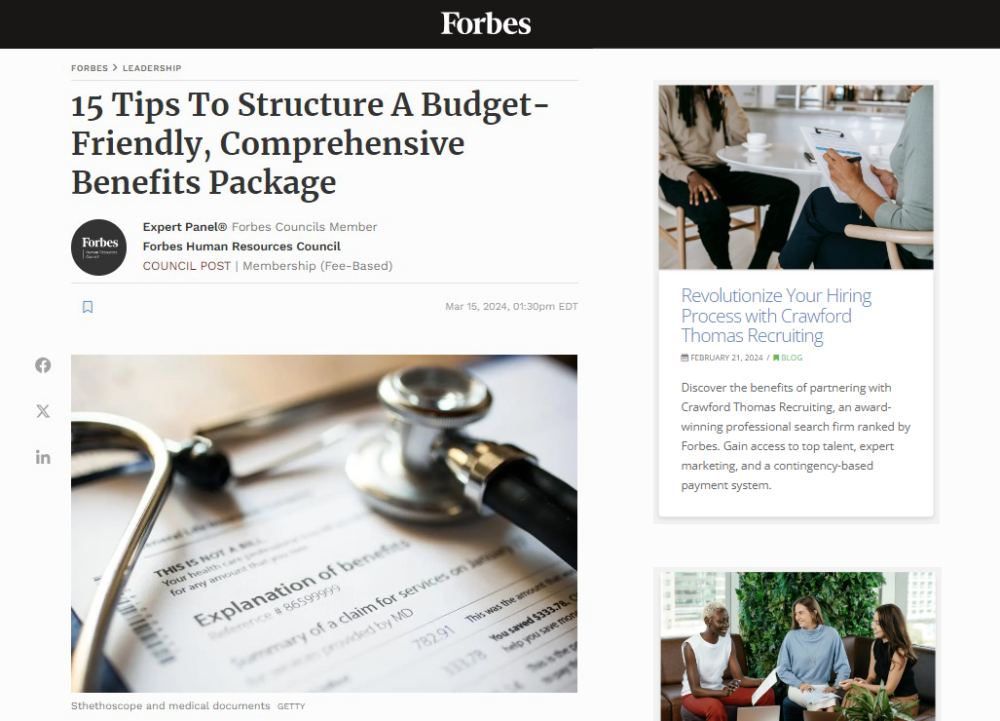
In a recent article by the Forbes Human Resources Council, experts shared invaluable insights into navigating the complex terrain of employee benefits. Among these insights, William Stonehouse, President of Crawford Thomas Recruiting, stood out for his innovative approach to negotiating benefits packages. Let’s delve into the key takeaways from this insightful piece and discover how modern employers can leverage these strategies to their advantage.
Read the full article from Forbes here.
1. Tailored Benefits for a Diverse Workforce
Experts emphasize the importance of tailoring benefits packages to suit the diverse needs of today’s workforce. This involves getting creative with nontraditional offerings and understanding the unique requirements of employees and company culture deeply.
2. Data-Driven Decision Making
Utilizing data is crucial in assessing employees’ needs and optimizing benefits packages accordingly. By leveraging employee feedback and enrollment data, employers can craft benefits strategies that enhance satisfaction and retention.
3. Flexible Solutions for Modern Workforces
Flexible benefits plans are essential to accommodate the diverse needs and preferences of employees. Employers should explore flexible options that align with the evolving demographics and expectations of the workforce.
4. Collaborative Negotiation for Optimal Results
Negotiating win-win benefits packages requires collaboration between HR leaders and employees. Employers should prioritize employee needs while considering financial constraints, negotiating cost-effective options that promote both health and financial well-being.
5. Leveraging External Resources
Employers can benefit from partnering with external resources such as Professional Employer Organizations (PEOs) to negotiate competitive benefits packages. This collaborative approach enables organizations to reduce healthcare costs while offering comprehensive benefits to employees.
Mastering employee benefits requires a multifaceted approach that includes tailoring benefits packages, utilizing data, offering flexibility, engaging in collaborative negotiation, and leveraging external resources. By adopting these strategies, employers can create benefits packages that meet the diverse needs of their workforce while staying within budget constraints.

